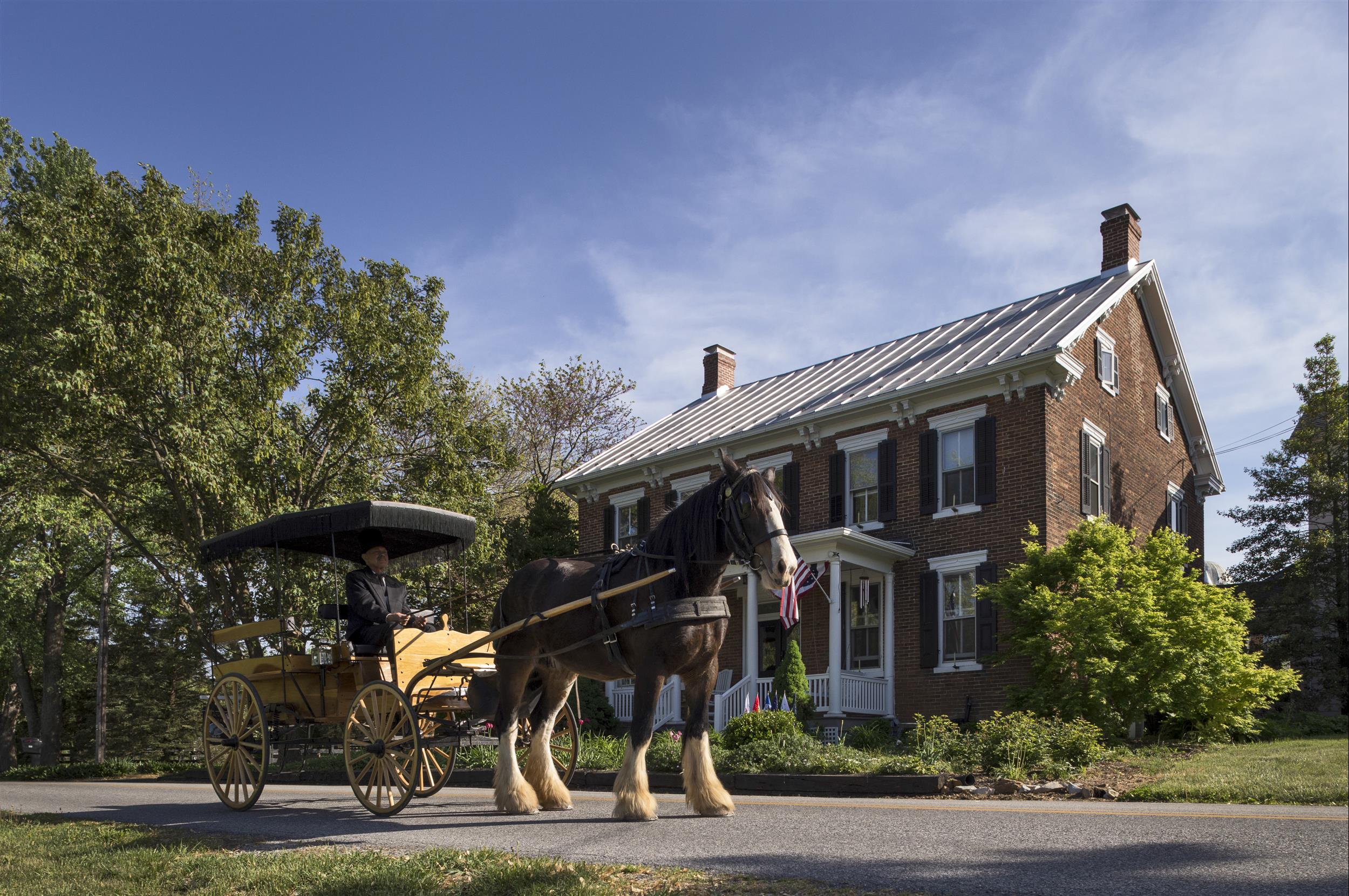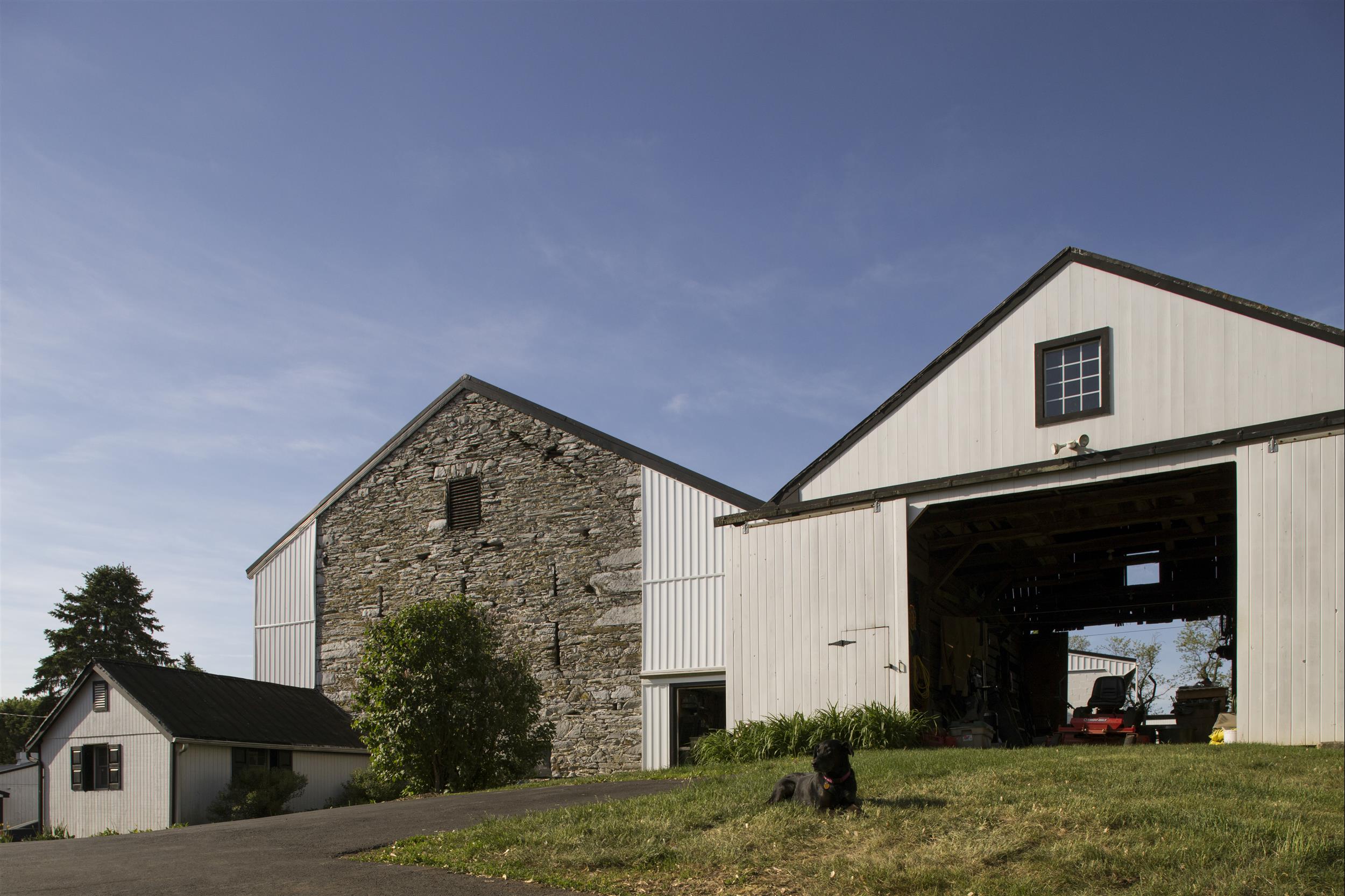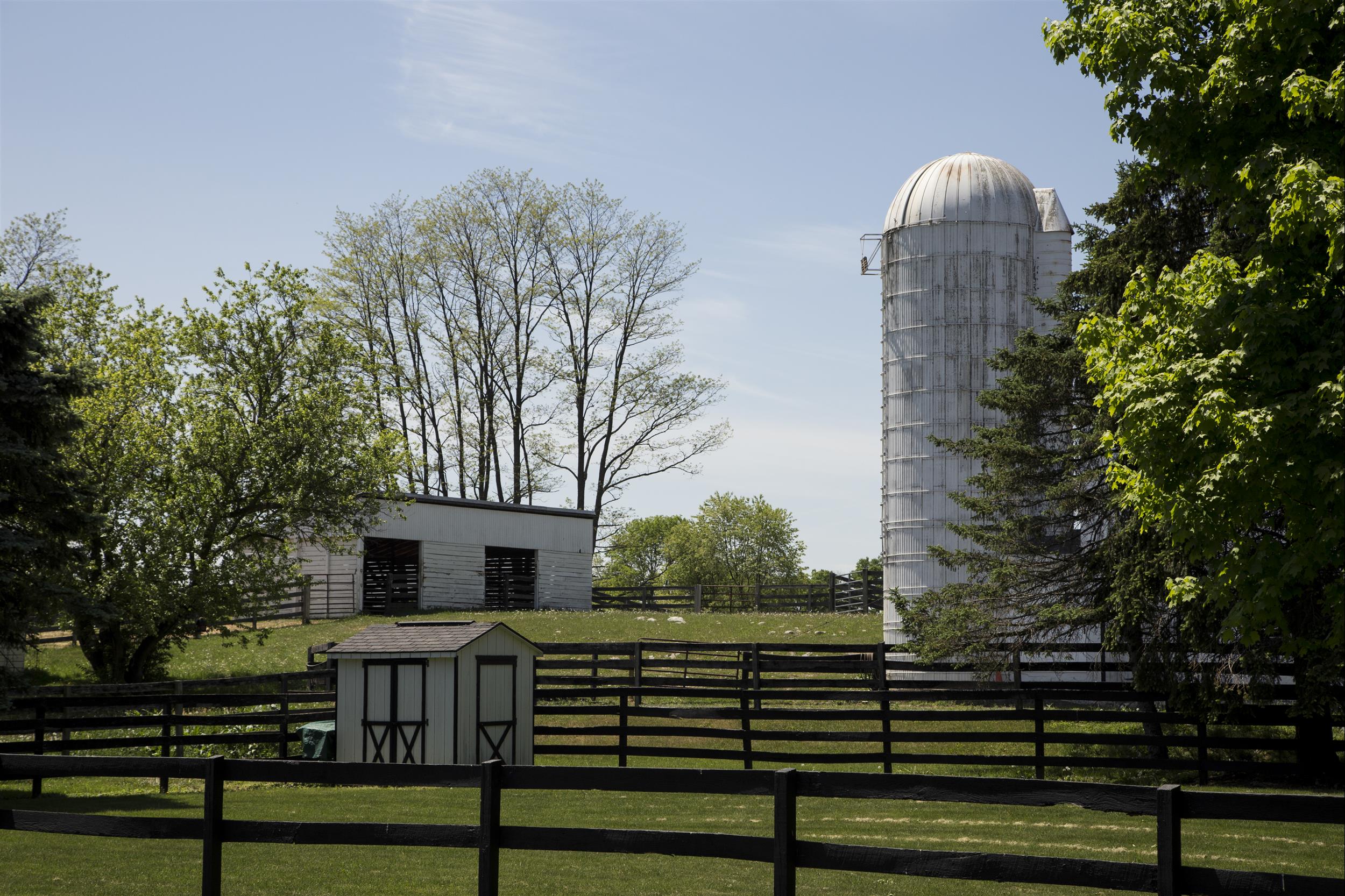Our stately, federal-style brick farmhouse was built by Gen. John Miller between 1800 & 1810. In the past two centuries, this property served as a family farm, a dairy farm, and horse breeding facility and is said to have sheltered runaway slaves as a stop on the Underground Railroad. More recently, Pheasant Field has been a popular B&B.
Although the main house is more than 200 years old, it's been lovingly maintained. Frequent updates provide guests with comfortable accommodations and modern convenience in an early American setting. Many rooms still have old ‘wavy' glass windows, and the entire house has retained original wide-plank pine floors. Exposed beams and horsehair plaster above the mantle still remain in the area that was once the summer kitchen. The interesting antiques mix nicely with contemporary amenities, and our guests are never without access to Wi-Fi!


